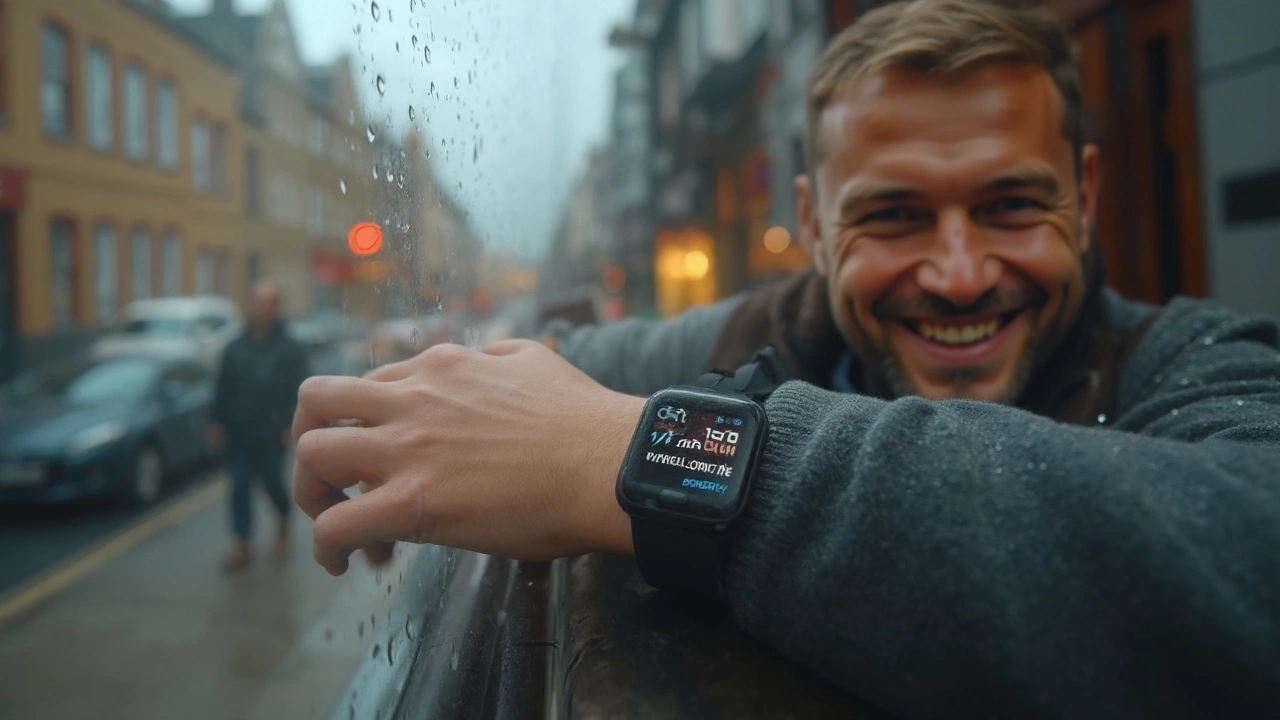How to Get Fit in 10 Minutes a Day: The Surprising Truth and Practical Tips

What if you could trade a Netflix episode for real fitness results? The idea sounds almost too easy: we’re told you need an hour at the gym, dripping sweat on mats, or signing up for expensive Bootcamps. But a steady stream of research and a bunch of regular people swear by a totally different approach. Just 10 minutes a day. If you’re busy, bored of gym culture, or feel stuck, this bitesized solution almost feels rebellious. But is it the miracle fix? Or is it too good to be true? Here’s everything you need to know about fitting true fitness into such a tight window—and how to make it work in real life.
Why 10 Minutes Can Actually Make a Difference
This might surprise you: A landmark study from McMaster University in Canada found that short, intense bouts of exercise can improve health markers as much as traditional longer workouts. The trick is the intensity. Instead of plodding along for an hour, you compress the effort and go all-in. Shorter workouts are easier to stick to—ask any time-strapped parent, student, or office worker in Bristol who has ditched endless cardio for quick HIIT (High Intensity Interval Training) bursts. British Heart Foundation reports show even as little as 10 minutes of brisk activity per day can lower your risk of heart disease. The UK’s NHS even recommends brief, energetic walks or exercises to get benefits.
But intensity doesn’t mean pain. You can get your heart pumping with playful skipping, squats, or even a quick mini-circuit in your kitchen. The science says: It’s consistency, not just duration, that matters. Doing ten minutes daily beats a single hour-long sweat session on Saturday. Plus, your brain gets a boost—short sessions lead to spikes in endorphins and focus, ideal for busy schedules or people working from home. A group at University College London ran a study and saw measurable improvements in mood and cognition after participants did just 10 minutes of rapid exercise. Pretty handy for those marathon Zoom days.
So what’s the catch? There isn’t one, really, except that for noticeable transformation—think more muscle, less fat, solid stamina—you need to actually push. A gentle walk won’t cut it. You have to commit to making that short time pay off. The magic comes from intensity, regularity, and just showing up… even on days you don’t feel like it.
Types of 10-Minute Workouts That Really Work
If you’re wondering, "What am I supposed to do in ten minutes?", the options are way bigger than they look. You’ve probably seen HIIT routines explode on YouTube: it’s fast, furious, and over before you can think up an excuse to quit. The goal is short spurts of high effort, followed by even shorter rests. A typical format is 40 seconds work, 20 seconds rest, repeated for ten rounds. But you don’t have to be a glutton for punishment—bodyweight circuits, shadow boxing, even dance breaks count, as long as your intensity spikes.
get fit in 10 minutes styles include:
- HIIT (High Intensity Interval Training): classics like mountain climbers, jumping jacks, or squat jumps.
- Bodyweight strength: think push-ups, lunges, planks, triceps dips done in a circuit with no breaks.
- Tabata: supercharged HIIT—20 seconds full-out, 10 seconds off, repeated 8 times for 4 minutes, followed by a quick mobility drill.
- Yoga flows: string together several sun salutations or an energetic vinyasa in a single 10-minute block.
- Pilates core blasters: a non-stop stream of bicycle crunches, supermans, and leg raises targets your abs fast.
- Fast-paced walking or stairs: dash up and down your block, stairs, or garden if you don’t fancy jumping around indoors.
Don’t underestimate how much you can do in a short burst—trackers like Fitbit or Strava show people regularly burning 80-120 calories in a super fast session. If you go hard, you’ll notice your legs tingle and your heart rate jump. What really shifts results is mixing it up, so alternate between cardio and strength, or throw in a set of yoga moves to keep things fresh. If you’re totally new, try "exercise snacks"—scattered 2-3 minute moves throughout the day. Even the World Health Organization supports this, no gym or fancy gear required.

The Science: How Short Workouts Affect Your Body
Let’s talk results you can measure. Key studies from respected journals like the British Journal of Sports Medicine show quick, consistent bursts of vigorous exercise pack a punch for your health. High intensity means you stress your muscles and cardiovascular system just like a longer workout, but you save time by cutting the warm-up and cooldown. Your body releases a surge of growth hormone and adrenaline, which boosts fat burning and repairs muscle—yes, even in just 10 minutes. Regular HIIT sessions improve blood pressure, insulin sensitivity (bye, sugar crashes), metabolism, and cholesterol profiles nearly on par with those endless gym hours.
In 2023, researchers at the University of Bath confirmed that even 10-minute daily walks improved participants’ blood sugar control and focus levels for the whole afternoon when taken straight after lunch. The magic of short workouts lies in the "afterburn" effect—your metabolism stays elevated for hours as you recover from the intense work. This is called EPOC (Excess Post-Exercise Oxygen Consumption), and it’s why a brief but powerful workout keeps the benefits rolling much longer.
But how much difference can you really expect? Here’s a little data breakdown, just to show why short workouts have become so popular. Check out this table for a quick comparison:
| Workout Style | Calories Burned (10 min) | Main Benefits |
|---|---|---|
| HIIT | 90-130 | Cardio fitness, fat loss, stamina |
| Strength Circuit | 60-90 | Muscle tone, metabolism boost |
| Fast-Paced Walk | 50-70 | Heart health, stress reduction |
| Yoga Flow | 30-60 | Flexibility, calm, core strength |
This isn’t just fitness industry hype. A 2022 survey by Sport England showed that people stuck to exercise just as much—or more—when sessions were under 15 minutes. Probably because it feels doable. And sticking to a routine is really what determines results.
Building a 10-Minute Routine That Sticks
So you’re sold on the idea. Now comes the trickiest part: actually showing up, day after day. Here’s where some clever tips can make all the difference. First, make the "where" easy: push aside the coffee table, use a stair, or just stand at your kitchen counter. Eliminate as much friction as possible. Set a timer for ten minutes (your phone’s perfect for this), and choose your music or podcast in advance. Pick exercises you genuinely enjoy, not just the ones influencers do. If you love jumping, jump; if you’re a planker, get planking. You’ll be amazed how quickly ten minutes pass if you’re not dreading it.
Another game-changer: link your workout to another habit, like putting the kettle on, closing your laptop, or even brushing your teeth. Studies from The Habit Institute (yep, it’s a thing) show routines are easier to stick to when you tie them to something you already do. Try "exercise snacks" after lunch or before bedtime—the timing matters less than the consistency. Celebrate tiny wins, like beating your rep count or just not skipping a day. Track your progress if you’re a numbers fan, with free fitness apps or a pen-and-paper wall chart. Visual motivation is powerful! And remember, rest days count too. Bodies need time to recover, so don’t beat yourself up if you’re not perfect.
If boredom creeps in, mix up your moves. There are loads of ten-minute YouTube channels, like Lucy Wyndham-Read and Pamela Reif, with routines ranging from beginner to tough-as-nails. The social side helps as well—roping in a friend or partner makes it more fun and keeps you accountable. Sharing quick videos or just texting "done!" to a mate can actually double your odds of sticking to it, according to real-world behaviour studies. If you miss a day, no sweat, just show up again tomorrow.

Real Talk: What You Can (and Can’t) Expect in 10 Minutes a Day
If you’re expecting total body transformation or Olympic-level fitness from ten minutes, you’ll probably be disappointed. But that’s not what short workouts promise. The realistic results? More energy, better sleep, improved mood, and real, visible fitness gains over weeks. Most people who do ten minutes a day report feeling sharper and less stressed, plus they often drop a trouser size or two if they combine workouts with healthier eating. If you layer in walking, cycling, standing more, or occasional weekend adventures, the benefits jump even faster.
There are limits, though. If your goal is to compete in marathons or get a bodybuilder’s physique, you’ll need to do more. And genetics have a say—some folks build muscle faster, others shed fat quicker. What’s not in doubt is that ten minutes can genuinely kickstart better habits, protect heart health, and give you the mental boost that drags you through the day. For parents with toddlers at home, students on deadline, or anyone grinding through long work shifts, it’s a lifeline. And it’s super easy to fit into a busy schedule. You never need to pack a gym bag or brave Bristol’s rainy streets just to get a quick session in.
As with anything, progress happens with patience and persistence. The sooner you start, the faster you’ll see—and feel—a difference. The trick is making those ten minutes non-negotiable, like charging your phone or feeding the cat. The results might just surprise you. In a world where time is always short, this approach is a breath of fresh air. Who wouldn’t want a slice of that?